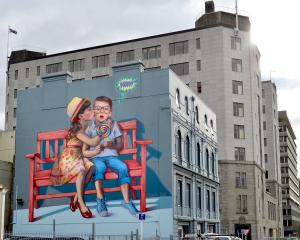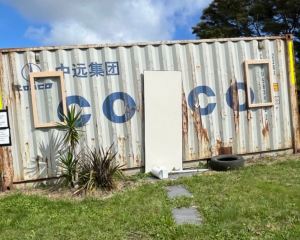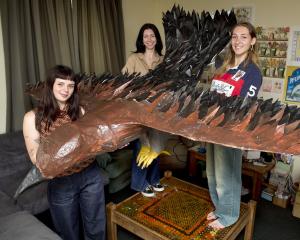Renowned Chinese sculptor Sun Qi has embarked on the biggest challenge of his career. Bruce Munro talks to the new Dunedin resident about projects past and future, adding meaning to life, and translating a lifetime of art in an alien context.
Sun Qi sits reposed, arms resting on a Dunedin cafe's faux marble table top, a gentle smile on his lips.
Next to him, his friend, businessman and translator Kevin Zhang, relays Sun's response to a question about the origins of his art.
Between, but behind them, in a corner on the floor, is a pair of bronze figurines.
They are beautiful, mysterious and out of place.
Should they not be in a spotlit display case rather than in the dusty shadows?
Why is one in Chinese dress while the other sports knee-high leather boots and a miniskirt?
Answers are not immediately apparent.
As a child in 1960s communist China growing up in his grandparents' care, Sun discovered he was at his calmest when copying drawings from picture books, Mr Zhang says. His parents recognised it, too.
Research institute employees, they only returned to Taiyun, the capital of northern Shanxi province, one day a week.
Wanting quiet on their day of rest, they arranged for Sun to take art lessons every Sunday at the local community activity centre.
With tertiary institutions re-opening in the late 1970s, Sun's growing artistic ability gained him entrance, first to the high school attached to the Central College of Fine Arts, in Beijing, and then, at the age of 21, to the sculpture department of the college itself.
Subjects included anatomy, philosophy, art history and aesthetics.
But the lion's share of the day was given to hands-on sculpting.
In their first year, students were each given a lump of clay, sat in front of a live model, and told to recreate the model's head.
And then do it again.
About 15 times during that year.
For the next four years, it was the same process but with nude models, a much larger block of clay and directions to sculpt the whole body.
Their instruction barely went beyond the naked human form.
But it trains your eyes and hands to be able to sculpt whatever is in front of you, Mr Zhang relays.
During the next 20 years, Sun's career and reputation grew.
Contemporaries and friends include the artist who created The Wolves are Coming sculpture now sited on Michael Hill's golf course near Arrowtown.
Sun has been involved in public art projects for cities such as Shanghai, Guangzhou and Beijing.
Of the Government-commissioned works, a standout is a 3.2m-tall sculpture commemorating the father of People's Republic of China President Xi Jinping.
The 2012 work reflects Sun's mature sculptural style.
His personal favourite, however, is a 7m-long and up to 1.2m-high series of enormous, shimmering metallic water droplets which he was commissioned to create for a public space near Beijing's Birds Nest stadium before the 2008 Olympic Games.
When he trained, accuracy, including the ability to instil life within the work, was the primary goal.
With time, however, accuracy has became secondary to the quest to put meaning and feeling into his art.
The bronze figurines, for example, are of a fertility goddess that was a disciple of Buddha.
Sun has depicted her, not in typical period costume, but in a later style of dress and in a modern Western outfit.
The clothes refer to China's contemporary inhabitants while the Buddha figure represents the soul.
The sculptures are his wish for his people to find contentment and happiness through faith, he says via his translator.
That search is present in his move to New Zealand.
As well as wanting to be closer to his elderly parents who followed his scientist sister here several years ago, and wanting Dunedin's educational opportunities for his teenage daughter, Sun and his wife came to soak up the beauty, security and relaxation of ''a society where people are not so unsettled''.
The family has bought a home at Portobello, on Otago Peninsula, where Sun hopes to build a workshop and gallery.
He has no illusions about the challenges ahead.
With all his cultural and artistic roots in China, it will take a long time to re-establish himself in New Zealand, he says.
To aid that process he would like to build connections with the local artistic community.
''The challenge is how to maintain his style, which is based on his cultural understandings, but also adapt his style in light of his new environment.''












